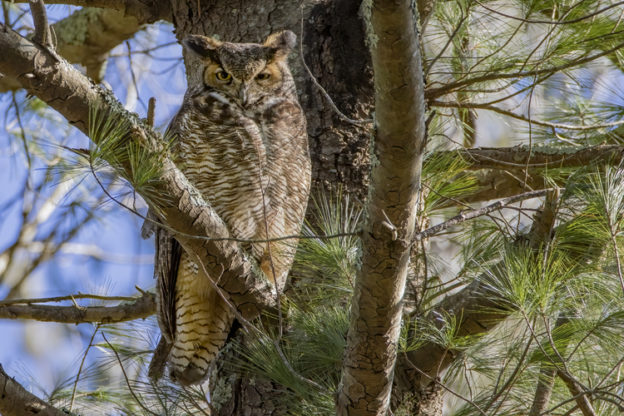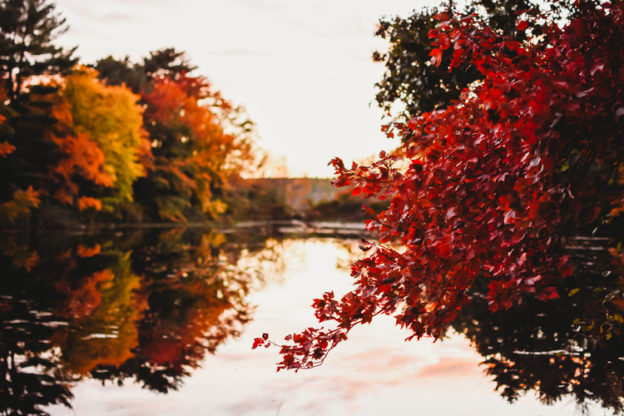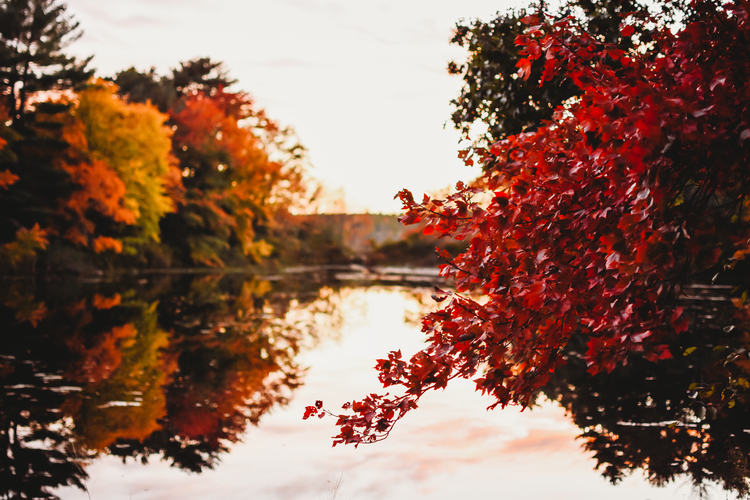When the heat of summer fades in October, the crispness of fall is a signal to birders to get outdoors and search for fall migratory birds. Don’t know where to start? Check out these birding hotspots at some of our Mass Audubon wildlife sanctuaries.
Daniel Webster Wildlife Sanctuary, Marshfield
This unique habitat attracts birders wanting to observe and appreciate a wide variety of bird species. Gone are the breeding Bobolinks that are major contributors to the allure of the sanctuary in summer, but now raptors like Northern Harriers take advantage of flourishing populations of Meadow Voles at Daniel Webster that scurry about in the grasslands. These rodents are the perfect prey for numerous raptors because they don’t hibernate or store food like most other rodents, leaving them exposed during their daytime activities.
Other predators like a Great Horned Owl wait until dusk to prepare for its next hunt. For a chance to hear their deep hoo-hoo calls and possibly even see one, walk along the Secret Trail and look through the groves of Red Maples, Gray Birches, and Red Cedars.
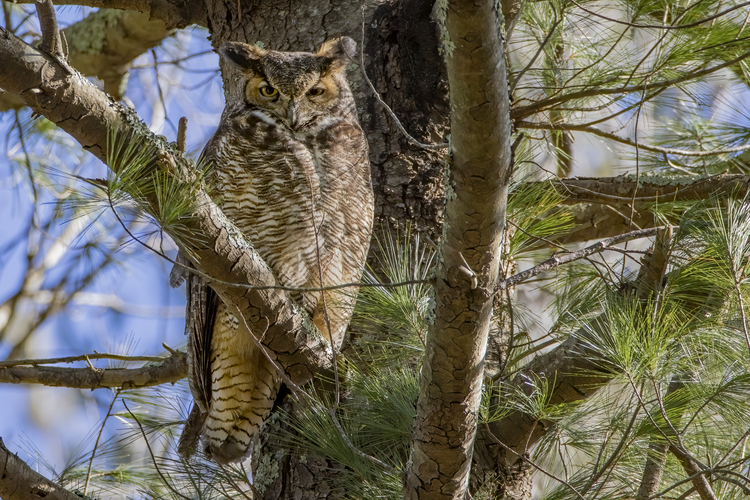
Head to Fox Hill Trail for a glimpse of the Green Harbor River and the occasionally flooded fields, where wintering freshwater ducks often congregate, including Green-winged Teal, pintail, Gadwall, wigeon, shoveler, Mallard, and Wood ducks.
Drumlin Farm Wildlife Sanctuary, Lincoln
Migrating birds are hungry birds, and what better place to refuel than in a crop field? At Drumlin Farm, fall is a wonderful time to search between the rows of vegetables or scan the shrubby field edges for sparrows while also keeping an eye on the sky for raptors like Red-tailed Hawks and Sharp-shinned or Cooper’s hawks.
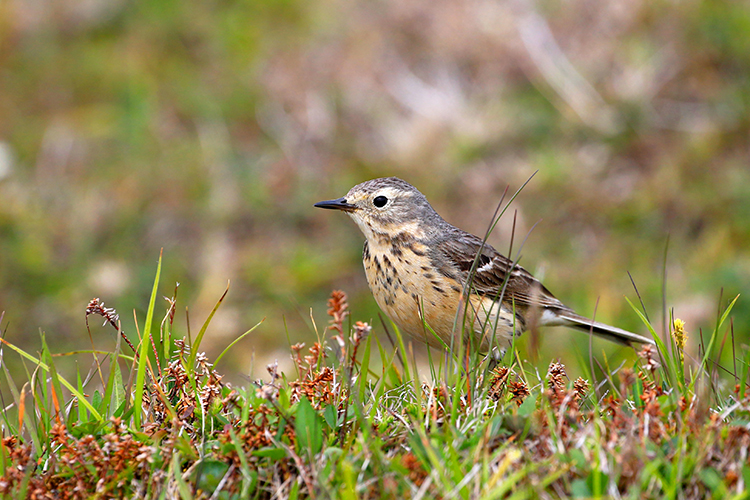
While you most likely see common species such as crows, American Robins, Cedar Waxwings, Eastern Bluebirds, and American Goldfinches, there is also always a chance you might spot something special like American Pipits. These small, slim birds with white outer tail feathers, a brownish back, and white underparts with brown streaks on their breast can be found in almost any type of open ground habitat. If you spot one searching for food, you’ll notice that it often pumps its tail while trying to find insects and seeds.
Wachusett Meadow Wildlife Sanctuary, Princeton
During the fall and winter, a variety of sparrows can be found at Wachusett Meadow. Before going on the trails, stop by the feeders near the Visitor Center to look for White-crowned, White-throated, Chipping, American Tree, Song, or Fox sparrows. With patience and persistence, both Lincoln’s and Swamp sparrows can often be found along the edges of the South Meadow Trail.
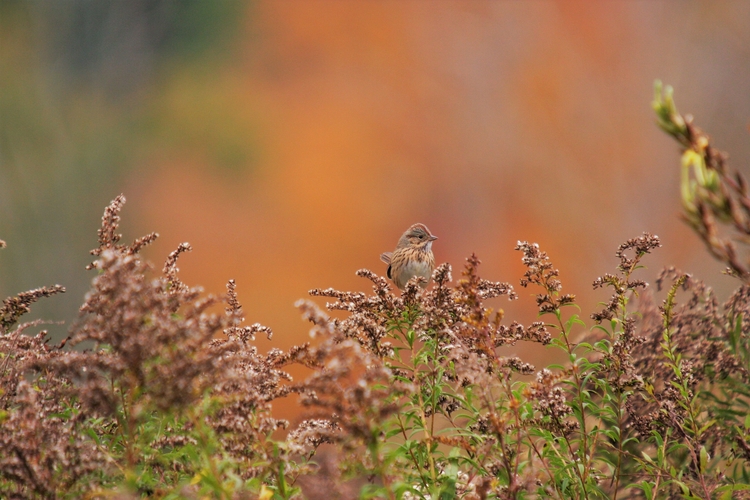
The Lincoln’s Sparrow can most easily be differentiated from other sparrows by the fine streaking on the buffy breast. When its crown feathers are raised, a Lincoln’s Sparrow’s head appears to have a slight crest. Keep your eyes towards the ground to find them foraging, usually not far from a woody edge where they quickly fly for protection when startled.
Pleasant Valley Wildlife Sanctuary, Lenox
From a central point at Pike’s Pond at the Pleasant Valley, many fall migrants often sift through the young forest and wetlands along the edges of the pond. One of the best places to spot birds is from the parking lot, which offers plenty of low shrubs in a nearby wetland where the birds frequently fly across the dirt parking lot to reach the next section of the wetland.
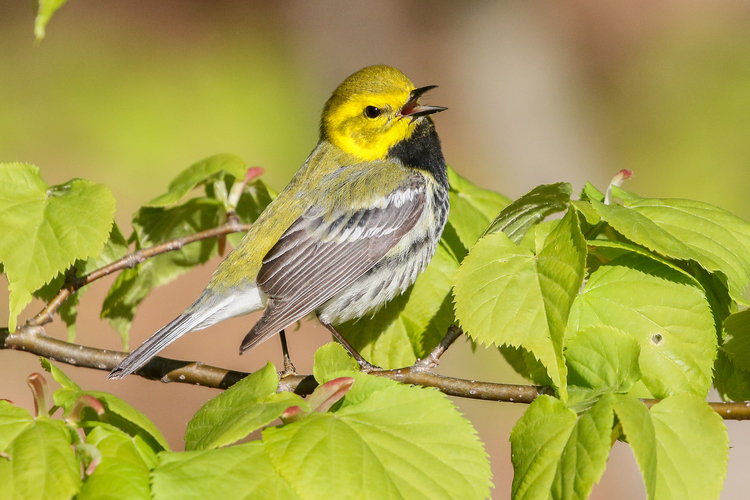
A number of migrant warblers regularly pass through Pleasant Valley, including the Black-throated Green Warbler. These bright, yellow-faced warblers have a black throat that leads into their white underside and olive-green backside, but the ones visible in the fall are often immature and lack the black throat. They often mingle with flocks of other migrant and resident birds.
Once you’ve checked out these locations, find your next birding spot at another Mass Audubon Wildlife Sanctuary. Tag us in any photos you take on our Facebook and Instagram at @MassAudubon.


